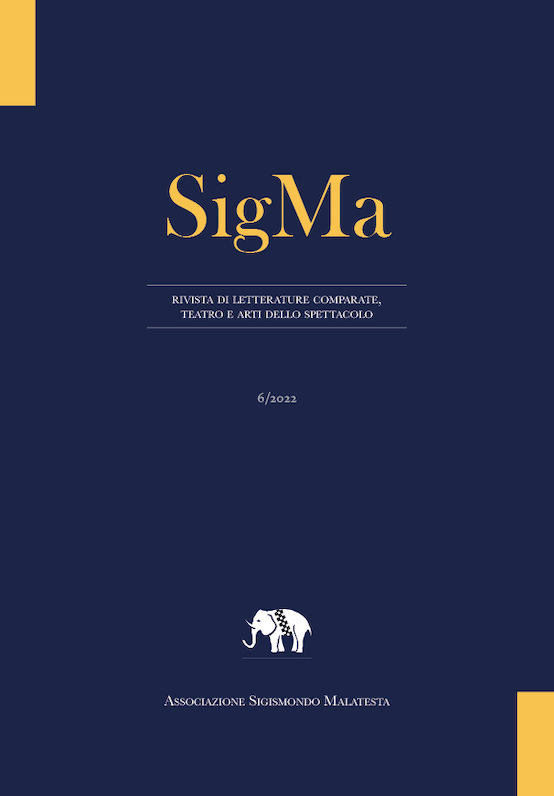La seconda venuta nelle narrazioni contemporanee: “In His Image”, “The Second Coming”, “Messiah”
Abstract
Negli ultimi decenni, soprattutto dopo gli eventi dell’11 settembre 2001, la religione è tornata in primo piano non solo come oggetto dialettico all’interno di narrazioni che la incrociano, ma anche come vero e proprio soggetto che ricostruisce o riformula sé stessa. È il caso, ad esempio, di quei racconti che riscrivono in diversa maniera figure di testi sacri, soprattutto, negli ultimi anni, personaggi dei Vangeli. Inoltre, la decostruzione socio-politica e ideologica degli ultimi decenni, nonché la diffusione di piattaforme di streaming su scala globale, hanno permesso un’esplosione nella trasmissione di storie che intersecano sfere di influenza culturale e religiosa differenti. Il mio saggio vuole quindi esplorare le modulazioni che tali riscritture hanno assunto nella “fiction” degli ultimi decenni, e tre in particolare: il Jesus-novel, sottogenere romanzesco studiato e classificato da Westphal (2002) e Holderness (2015), in cui Gesù personaggio assume funzioni narrative articolate, nelle quali confluiscono molteplici tipologie di personaggi e strutture drammatiche: il capro espiatorio e il re pescatore, ma anche il fool, l’idiota, il divo, come nel romanzo The Second Coming (2011) dello scrittore scozzese John Niven. Un secondo paradigma, ancor più sui generis, è quello di un sottogenere ancora più di consumo, una fantascienza di matrice genetica che immagina Cristo non risorto, ma clonato: è quanto accade nella Christ Clone Trilogy (1988, 1997, 2003) dell’americano James BeauSeigneur. Infine, interessanti riflessioni possono scaturire dall’analisi di una serie tv del 2020 intitolata Messiah, di produzione statunitense, in lingua inglese, araba ed ebraica, in cui tra dubbi e incertezze il/un Messia ritorna per richiamare alla pace l’umanità, in un movimento, tuttavia, che sembra portare a una forma di anarchia religiosa.
Downloads
SigMa pubblica in internet, ad accesso aperto, con licenza:
|
|
CCPL Creative Commons Attribuzione |
L'autore conserva il copyright sul suo contributo, consentendo tuttavia a chiunque "di riprodurre, distribuire, comunicare al pubblico, esporre in pubblico, rappresentare, eseguire e recitare l'opera", purché siano correttamente citati l'autore e il titolo della rivista. L’autore, al momento della proposta di pubblicazione, è inoltre tenuto a dichiarare che il contenuto e l’organizzazione dell’opera è originale e non compromette in alcun modo i diritti di terzi, né gli obblighi connessi alla salvaguardia di diritti morali ed economici di altri autori o di altri aventi diritto, sia per testi, immagini, foto, tabelle, sia per altre parti di cui il contributo può essere composto. L’autore dichiara altresì di essere a conoscenza delle sanzioni previste dal codice penale e dalle leggi speciali per l’ipotesi di falsità in atti ed uso di atti falsi, e che pertanto Reti Medievali è esente da qualsiasi responsabilità di qualsivoglia natura, civile, amministrativa o penale, e sarà dall'autore tenuta indenne da qualsiasi richiesta o rivendicazione da parte di terzi.

